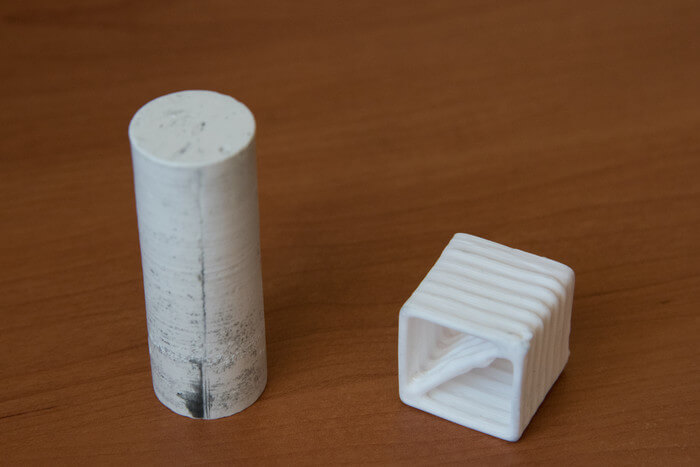- Get link
- X
- Other Apps

Scientists of Tomsk State University have developed a method of three-dimensional printing with ceramics, whose properties are not inferior in strength to high-alloy steel grades, non-ferrous metals and many metal alloys. At the moment, TSU employees are working to improve the technology, which in the future will allow the production of various three-dimensional products that can be used in electronics, power engineering, the chemical industry and even in the defense industry. Using the printer, you can make protective panels for spaceships or satellites, ceramic printing parts can be used for the manufacture of propulsion systems, chip substrates and much more.
“Ceramics occupy a special place among the new materials, because of the peculiarities of the structure, they have different thermal conductivity parameters, high strength and hardness, which determine their application,” says Vladimir Promakhov, a university researcher. “However, there is a problem with the manufacture of complex-shaped products from ceramics, which is why they are not widely used.”
Vladimir noted that, until now, the main method of making ceramic molds was injection molding, which did not allow obtaining ceramic products of a complex configuration. Now there are methods for 3D-printing products of complex geometry, but with their help, you can get only porous and not very durable products.
A 3D printer developed by Tomsk scientists can print high-quality, monolithic in its structure, ceramics of complex configuration and with printing accuracy up to tens of microns. With the help of such a printer it will be possible to make volumetric products, hollow spheres, cellular shapes. In short, everything that can not be made using conventional casting. The printer also has a continuous printing feature.

Scientists not only developed the printer itself, they also make raw materials for it using the “solid flame” method, using self-propagating high-temperature synthesis based on an exothermic combustion reaction, scientists obtain ceramic powders, then make the material needed for printing from powders. At a certain temperature, the powder must be brought to a creamy state, after which it is already possible to start printing. When the printed semi-finished product is ready, it remains to be baked, that's all.
Vladimir Promakhov noted that the technology has already been patented and all the necessary documents have been approved. Now scientists are working on adapting the printer for different ceramics.
The article is based on materials .
- Get link
- X
- Other Apps
Comments
Post a Comment